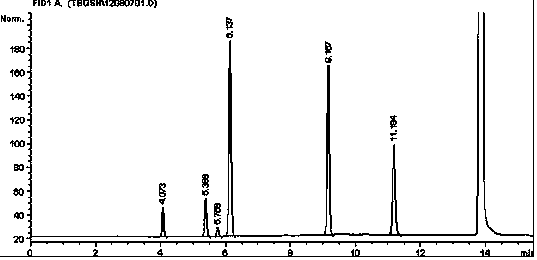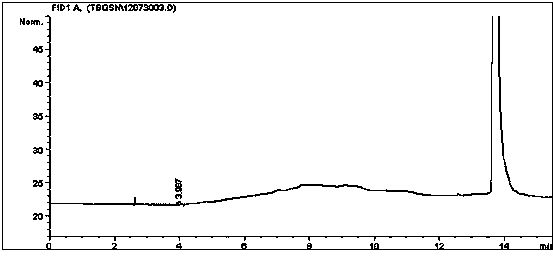Method for simultaneously detecting multiple residual solvents in ceftriaxone sodium
A residual solvent and detection head technology is applied in the field of simultaneous detection of various residual solvents in ceftriaxone sodium, which can solve the problem that the detection method cannot meet the requirements, and achieve the effects of high accuracy, simple operation and good repeatability
- Summary
- Abstract
- Description
- Claims
- Application Information
AI Technical Summary
Problems solved by technology
Method used
Image
Examples
Embodiment Construction
[0056] 1 Instruments and reagents
[0057] Agilent6890N gas chromatograph; Agilent7694E headspace sampler; ceftriaxone sodium (batch number: TQ0043); DMSO is HPLC grade, and other reagents are of analytical grade.
[0058] 2 Chromatographic conditions
[0059] Chromatographic column: capillary column with 100% polydimethylsiloxane as stationary liquid (HP-1 60m×530μm×5.00μm);
[0060] Carrier gas: N 2 ;
[0061] Ascending heating: keep at 40°C for 4 minutes, then start at 20°C˙min -1 The temperature is raised to 150°C at a rate of 6 minutes;
[0062] The inlet temperature is 200°C (split ratio: 1:1, column head pressure 7.70psi);
[0063] Detector: hydrogen flame ionization detector (FID);
[0064] Detector temperature: 250°C;
[0065] Headspace equilibrium temperature: 60°C;
[0066] Headspace equilibration time: 30min;
[0067] With DMSO as solvent.
[0068] 3 Preparation of solution
[0069] 3.1 Preparation of reference substance stock solution
[0070] Ac...
PUM
 Login to View More
Login to View More Abstract
Description
Claims
Application Information
 Login to View More
Login to View More - R&D
- Intellectual Property
- Life Sciences
- Materials
- Tech Scout
- Unparalleled Data Quality
- Higher Quality Content
- 60% Fewer Hallucinations
Browse by: Latest US Patents, China's latest patents, Technical Efficacy Thesaurus, Application Domain, Technology Topic, Popular Technical Reports.
© 2025 PatSnap. All rights reserved.Legal|Privacy policy|Modern Slavery Act Transparency Statement|Sitemap|About US| Contact US: help@patsnap.com



